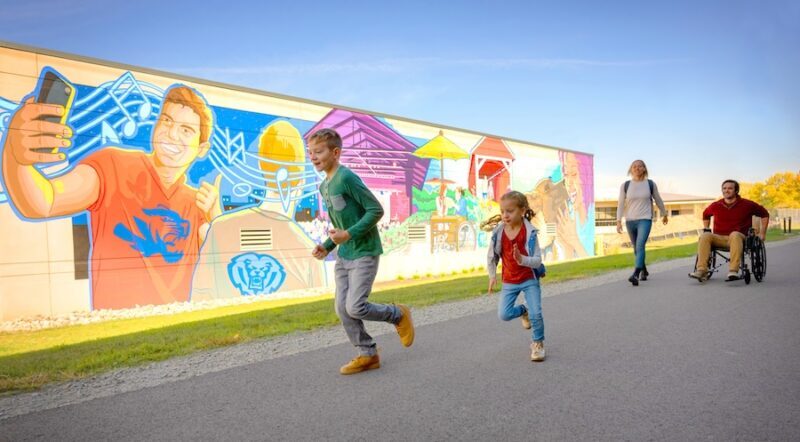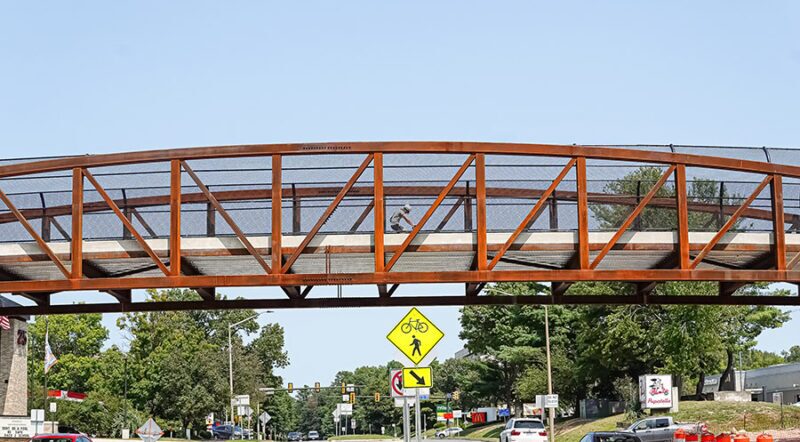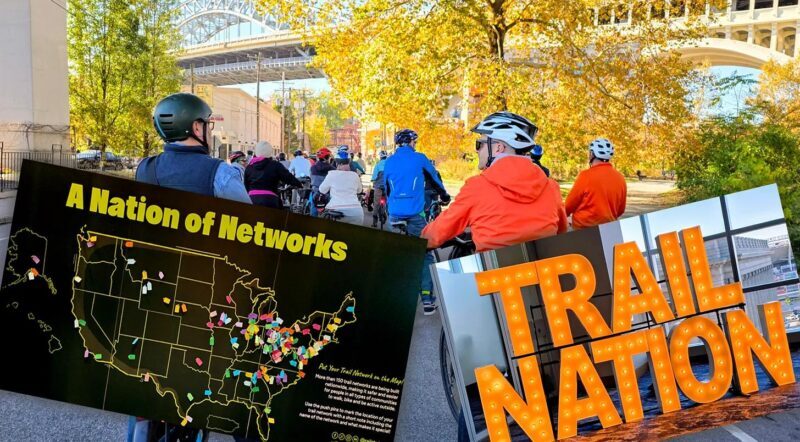“From Rails to Trails”: The Origin Story of America’s Beloved Pathways
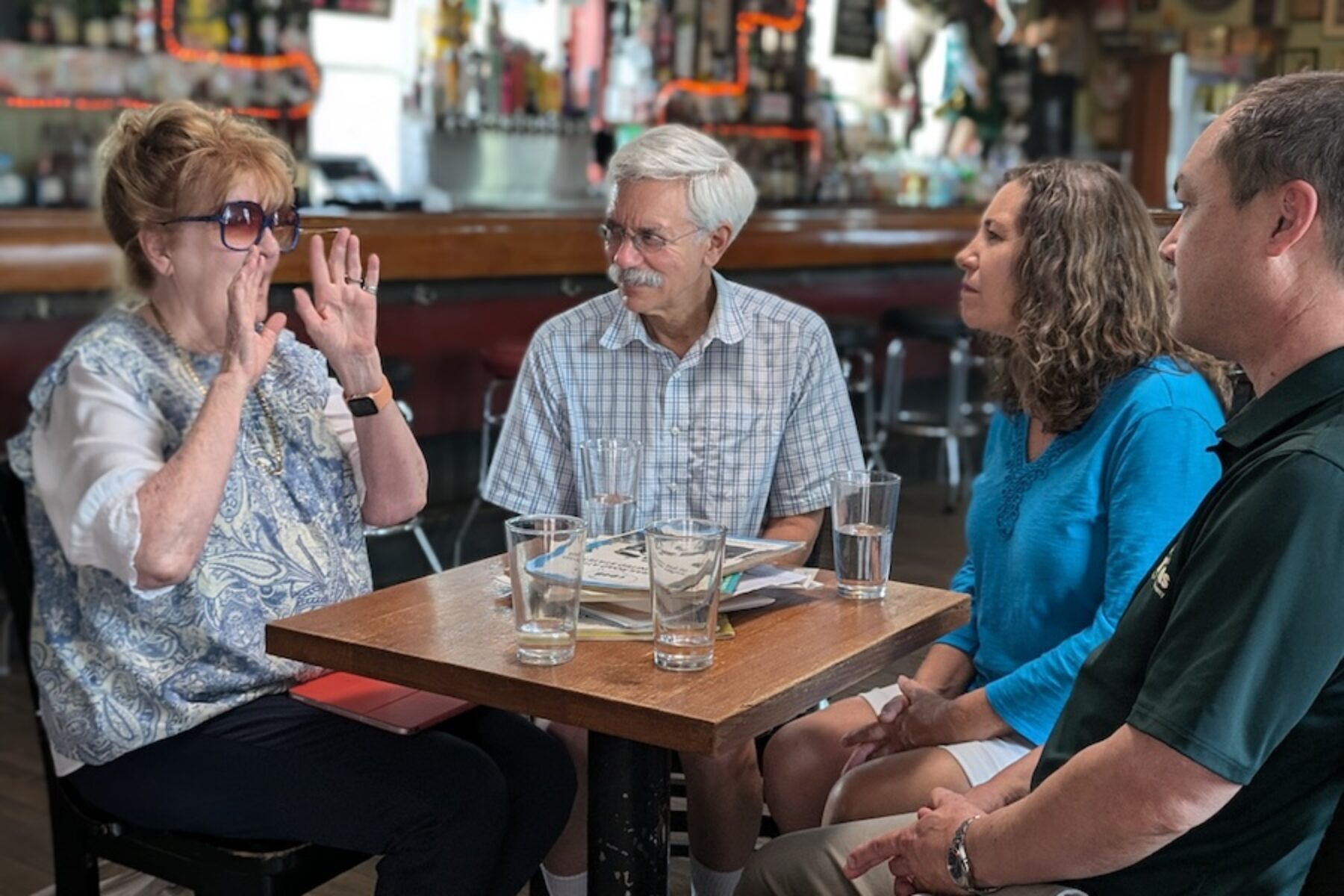
Article Takeaways
- “From Rails to Trails” is a new documentary by filmmaker Dan Protess that airs on PBS.org and local networks nationwide beginning Oct. 15, 2025.
- The documentary explores the origins of America’s trails movement, a political movement that emerged from the enthusiasm and passion of citizen activists who sought to protect unused rail corridors to create safe spaces for people to walk, bike and be active outside.
- Rails to Trails Conservancy’s co-founder and executive producer of the film, Peter Harnik, shares insights into the origins of America’s rail-trails, while RTC vice presidents, Liz Thorstensen and Kevin Mills, expand on the complex issues and current realities that the organization and the movement face, including protecting railbanking and addressing the interests of land owners and local residents, as communities nationwide work to create, connect and maintain the country’s trail system.
In advising filmmaker Dan Protess on the adaptation of his book, “From Rails to Trails,” Rails to Trails Conservancy co-founder Peter Harnik said he wanted to point the documentarian toward trail projects and moments of political importance in the movement. That is why the film, “From Rails to Trails,” airing this month on PBS, features May Watts’ transformative 1963 Chicago Tribune letter to the editor advocating for what would become the Illinois Prairie Path at a time, she wrote, when “many bulldozers are drooling” to develop the former railway. According to Harnik and other early leaders in the rail-trail movement, that letter was the spark that ignited the movement.
Watts’ shared vision of a walk among ferns, prairie and goldenrod underneath forests of sugar maple trees served as a tipping point, drawing a groundswell of public support to back the trail’s development. Her call to action and the resulting preservation of the Illinois Prairie Path was an early, signature victory for trail advocates in the 60-year history of the rail-trail movement that is chronicled in the film. But “From Rails to Trails” also shows the challenges that emerged over the course of the movement—property rights concerns and gentrification among them—as well as the key legal mechanism, railbanking, that protects unused rail corridors, preventing them from being parceled out and developed.

The film illuminates the organizing that’s necessary from the national level, spearheaded by Rails to Trails Conservancy’s efforts over 40 years, to local coalitions that collaborate to push projects forward. At the same time, it demonstrates through interviews with Republican and Democratic representatives that trail development is the ever-so-rare issue that bridges the growing bipartisan gap. Two of those voices featured in the film, former Wisconsin Gov. Tommy Thompson (R) and former Vermont Gov. Howard Dean (D), recently co-authored an opinion piece for the Washington Post that elevates the restorative value of trails as common ground where people can unite and build community. Thompson’s, Dean’s and Harnick’s shared message is especially poignant right now, at a time when the trails and active transportation movement is facing new, very real challenges, including significant threats to the federal programs and funding essential to creating, connecting and maintaining this infrastructure nationwide.
The story isn’t over, either. Today, there are more than 42,000 miles of multiuse trails nationwide, and the momentum to connect these trails into connected networks that make it safer and easier to walk and bike is strong, with hundreds of projects reaching every single state in the country. Some of the issues introduced in the film—like railbanking, property rights and politics—are still critical, and important to the work that the team at Rails to Trails Conservancy does every day in its quest to build a nation connected by trails.
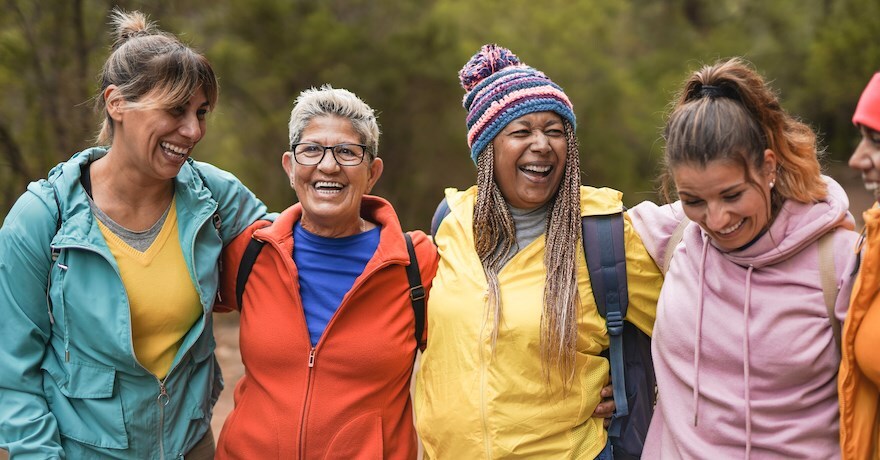
Railbanking: A game-changing piece of legislation, now under threat
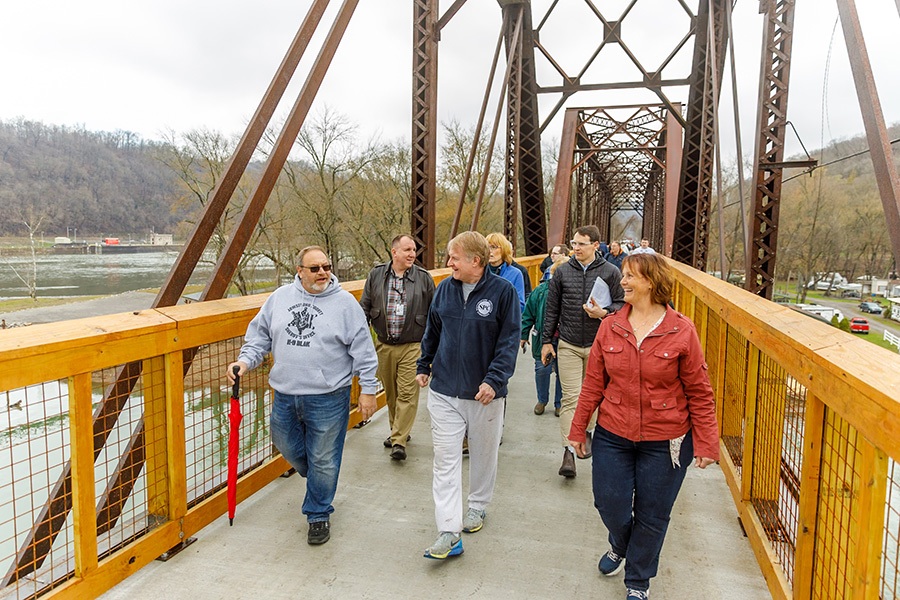
“From Rails to Trails” brings into clear view the impact and the controversy that’s surrounded a little-known piece of legislation signed into law by President Ronald Reagan in 1983. Railbanking is responsible for the development of thousands of miles of corridors that cross 43 states and Washington, D.C. The legislative tool prevents unused railway corridors from being sold off piecemeal, preserving them for potential future use by the rail industry while allowing them to be utilized as trails in the interim.
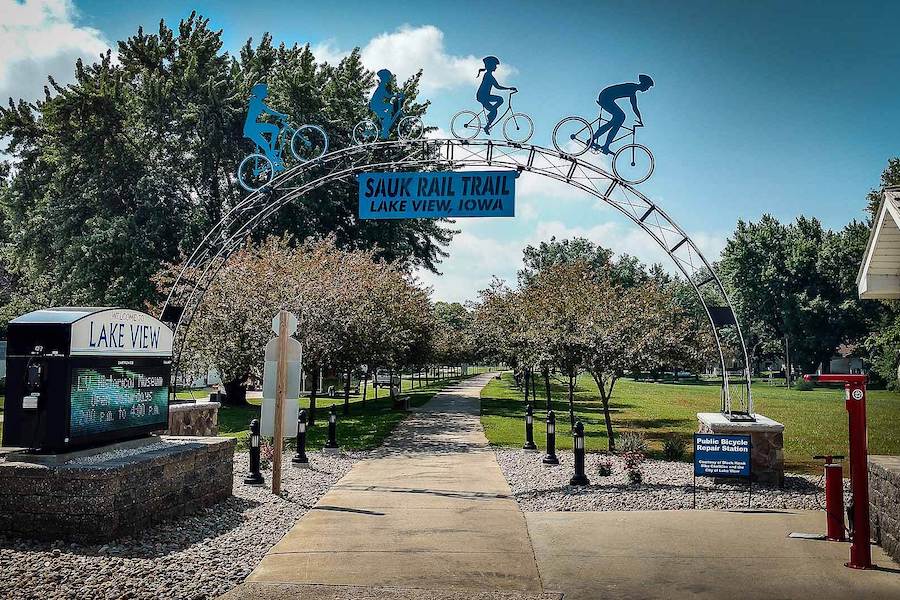
The film makes clear the significance of the legal concept, which has not been without controversy and legal challenge, all the way to the U.S. Supreme Court. The landmark case, Preseault v. United States, upheld the constitutionality of railbanking after it was challenged by a Burlington, Vermont, family seeking ownership of, and then compensation for, railway land that crossed their property. (Dean, the former Vermont governor, provides an impeccable, “don’t miss” Bernie Sanders impression in the process of recounting the story.) In the ruling, the Court stated that “Congress apparently believed that every line is a potentially valuable national asset that merits preservation,” while also creating a path forward for landowners to file a claim with the U.S. Department of Justice seeking just compensation if they believe they have not received it.
“Railbanking, this foundational law of our movement, is about preserving rail corridors for their transportation purpose, and in the interim for use as a trail,” said Kevin Mills, RTC’s vice president of policy. “But the point is that if you ever need to reinstate rail service, whether it’s freight, like it may have been before, or whether you start doing high-speed passenger rail … it won’t be possible to put the corridors back together if you don’t preserve them, and this law is about keeping them intact.”
The law is facing a new challenge not covered in the documentary, H.R. 4924, a proposed bill called the “Rails to Trails Landowner Rights Act.” Mills recently wrote that the bill, if enacted, “effectively destroys the viability of railbanking going forward, introduces exceedingly burdensome and unworkable changes that threaten future and existing rail-trails, and risks causing irreparable harm to the nation’s rail corridors.”
Railbanked corridors cross 162 congressional districts, and Rails to Trails staff are working with legislators across the ideological landscape to protect and build support for railbanking’s preservation, while also calling for the reauthorization and strengthening of the federal funding mechanisms that support trail development and maintenance.
Landowner rights a challenge trail developers continue to address through connection
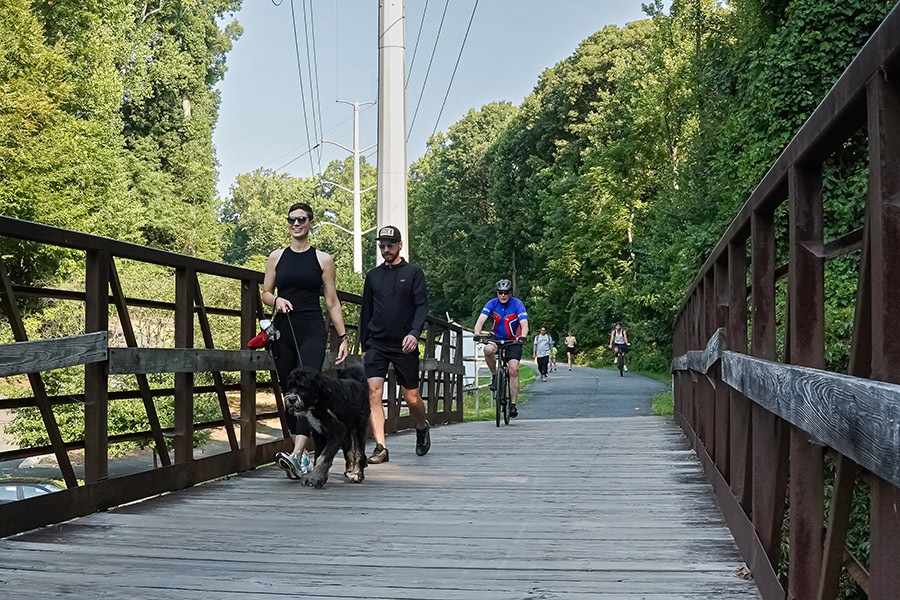
The documentary highlights many of RTC’s legacy Hall of Fame trails, including Wisconsin’s Elroy-Sparta State Trail, Washington’s Burke-Gilman Trail, Missouri’s Katy Trail, New York City’s High Line Trail and Virginia’s W&OD Trail. These forebearers of the trails movement, while beloved today, were met with opposition in the early days of organizing.
In many cases, misunderstandings existed about the property rights of the rail corridor, and in other cases, adjacent landowners were eligible for compensation for the historic taking of the land by the federal government for the development of the railroad—paid out from the U.S. Department of Justice as part of the “judgement fund.” These takings cases continue today, and in Indiana, a recent U.S. District Court ruling found that nearly 300 property owners along the Monon South Trail are entitled to seek federal compensation.
Courts have, however, supported giving interim trail managers broad authority over railbanked corridors, including the ability to use the surface, subsurface and aerial space for transit and for utilities. The Surface Transportation Board, the federal agency that oversees railroads and related transportation issues, allows railbanked corridors to be used not just for trails, but also for other compatible purposes like highways, transit and utility lines, as long as trail use is preserved.
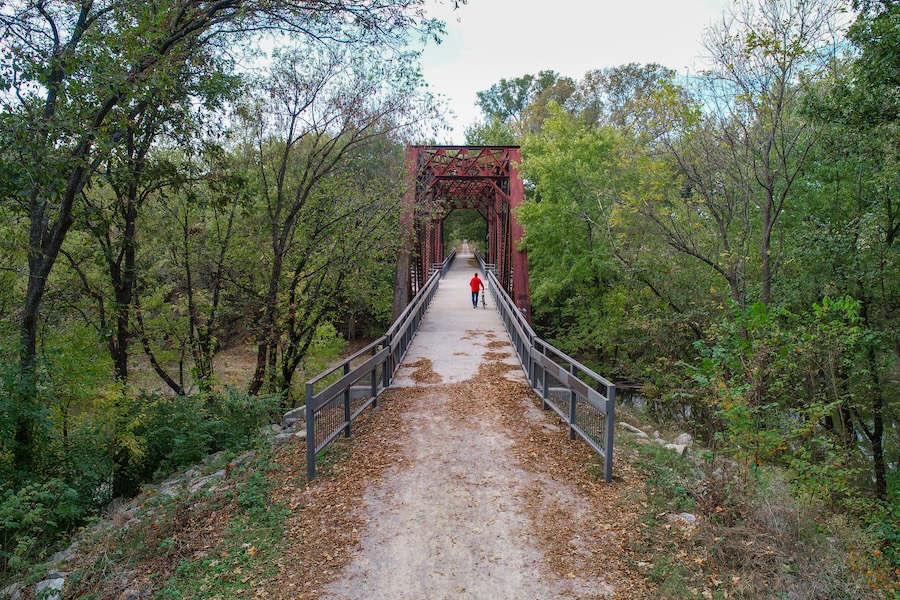
Along with legal backing, Liz Thorstensen, RTC’s vice president of trail development, said open dialogue is essential in building consensus when it comes to landowner rights. She cited the evolution of public opinion around Kansas’ Flint Hills Trail State Park, a recent RTC Hall of Fame inductee, that passes through ranchland and rural communities. “It’s about forming a positive relationship,” she said, and it also helps to be able to show results. A study by Wichita State University’s Center for Economic Development and Business Research found that the Flint Hills Trail generates $1.8 million in annual economic impact through direct spending of the people who use it, bringing tangible benefit to the communities it connects.
“Early on, many people thought it was a waste of money and a waste of time, but you don’t hear that too much anymore,” said Doug Walker, a former Kansas state senator and longtime trail advocate in a recent interview with RTC. “Public opinion has changed tremendously. As the trails developed, more people used them and they liked them. If you build it, they will come.”
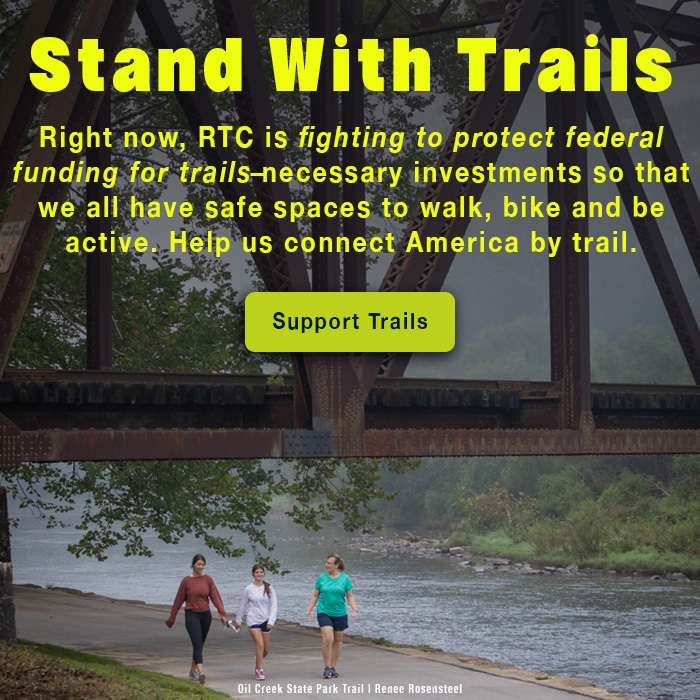
Creating green space and supporting local residents
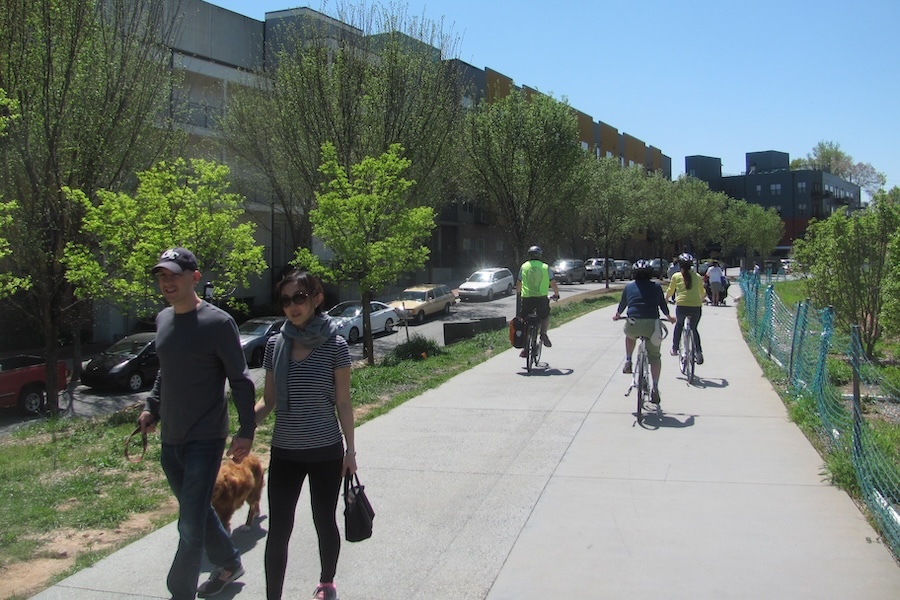
Because trails generate income, interest and traffic, they can sometimes serve as accelerants in pricing people and local businesses out of the communities where they’re located. Addressing gentrification before it happens has become a focal point, Thorstensen said. The documentary points to efforts along Atlanta’s 22-mile Beltline trail, where planners designated that a portion of the development along the $800 million revitalization project will be devoted to affordable housing. Thorstensen pointed to a unique effort underway by Atlanta’s planners as the type of strategy tailored to that area’s need.
“They’re developing a comprehensive retail affordability strategy that they plan to implement,” she said. “National brands are already showing interest, and they want to ensure the Beltline is a place where local businesses can also thrive.”
Each community offers its own nuance, Thorstensen said. That’s why it’s crucial that planners and developers work with stakeholders throughout the process.
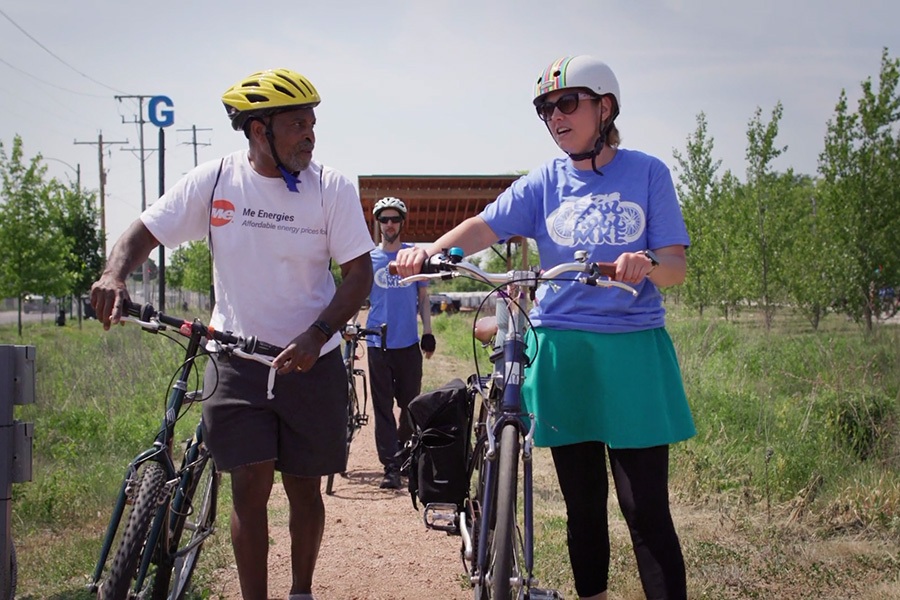
Thorstensen cited RTC’s work with local partners to engage with the community to seek their input as efforts continue to develop a trail along Milwaukee’s 30th Street corridor. “We’re working really closely with the housing organizations and business improvement districts along the corridor to make sure that the future trail is a leverage point for inclusive economic development, rather than a gentrifier,” she said.
Bipartisan support remains signature aspect of trail development
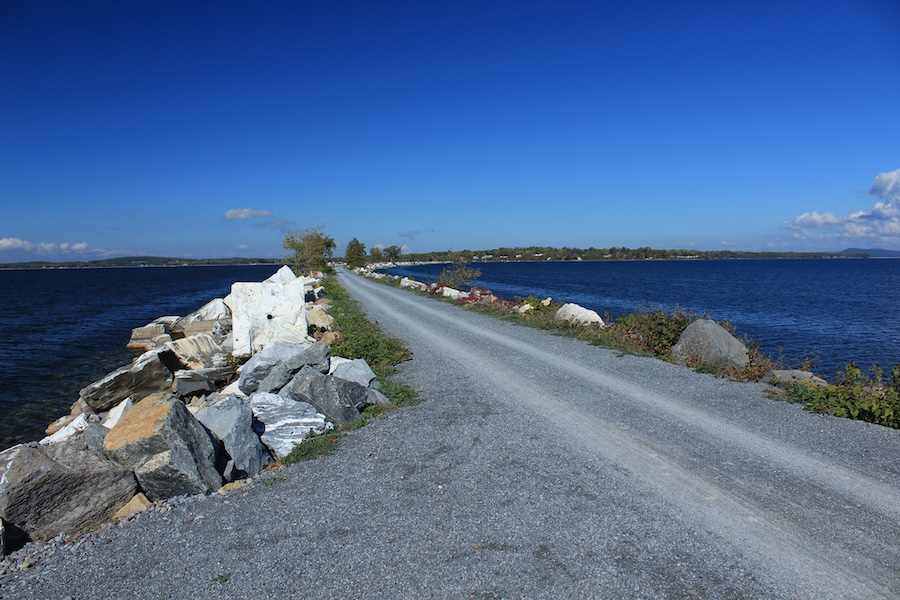
“At a time when the national conversation is polarized, rail-trails remind us of another American tradition: cooperation,” Dean and Thompson, the governors interviewed in the documentary wrote in their recent Washington Post op-ed. “The railroads helped build our great nation, and today their legacy is helping to reconnect and revitalize it.”
Said Harnik: “There’s a lot of things they don’t agree about, but they agree on trails, and trails bridge the red-blue chasm.”
As Dean and Thompson wrote, it’s often an uphill climb, but one worth taking. “Today, many promising trail projects are stalled or underfunded … [but] residents are still working to transform unused corridors into public spaces,” they wrote. “The most ambitious of them all—the Great American Rail-Trail, envisioned as a 3,700-mile route connecting Washington, D.C., to Washington state—is halfway complete. In each case, the need is urgent for safer places to walk and bike, new green space for growing cities, and fresh opportunities for local economies.”
Federal funding for trails has ebbed and flowed over the four decades that RTC has advocated for investment in the nation’s trail network. But recent grant recissions initiated by Congress and the U.S. Department of Transportation “are causing uncertainty and delaying project benefits,” Mills recently wrote. And the Transportation Alternatives program, the long-standing and among the only dedicated federal sources of funds provided to states for walking and bicycling infrastructure, Mills wrote, faces new threats as well. While the demand for new and maintained trails remains, he wrote, history says road projects often win out when states have to dedicate transportation funding to one project or the other.
Thorstensen said that the need for trails is present in conversations she has with planners and community members across the country, and it’s a reason she continues to advocate on behalf of the trail movement. “We just keep hearing that same theme of how important the access to being in open space is, and what that does for people in terms of their own mental health, their connection to being with other people, their connection to the community, and to nature,” she said. “You just can’t overstate how important that is.”
How to Watch
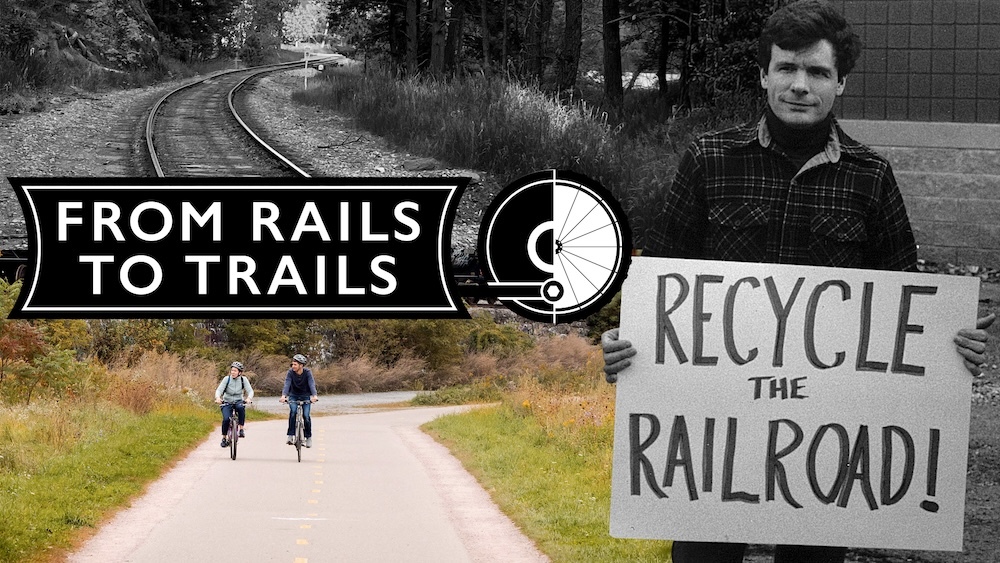
Narrated by Edward Norton (son of RTC founding board member Edward Norton Sr. and a conservationist in his own right), “From Rails to Trails” will air beginning Oct. 15 (check your local listings for times) and be available to stream on PBS. Harnik said he hopes it’s eye-opening for viewers who don’t know about the effort that goes into trail development.
“There’s a whole group of people that love trails, use them and have no idea about the backstory,” Harnik said.
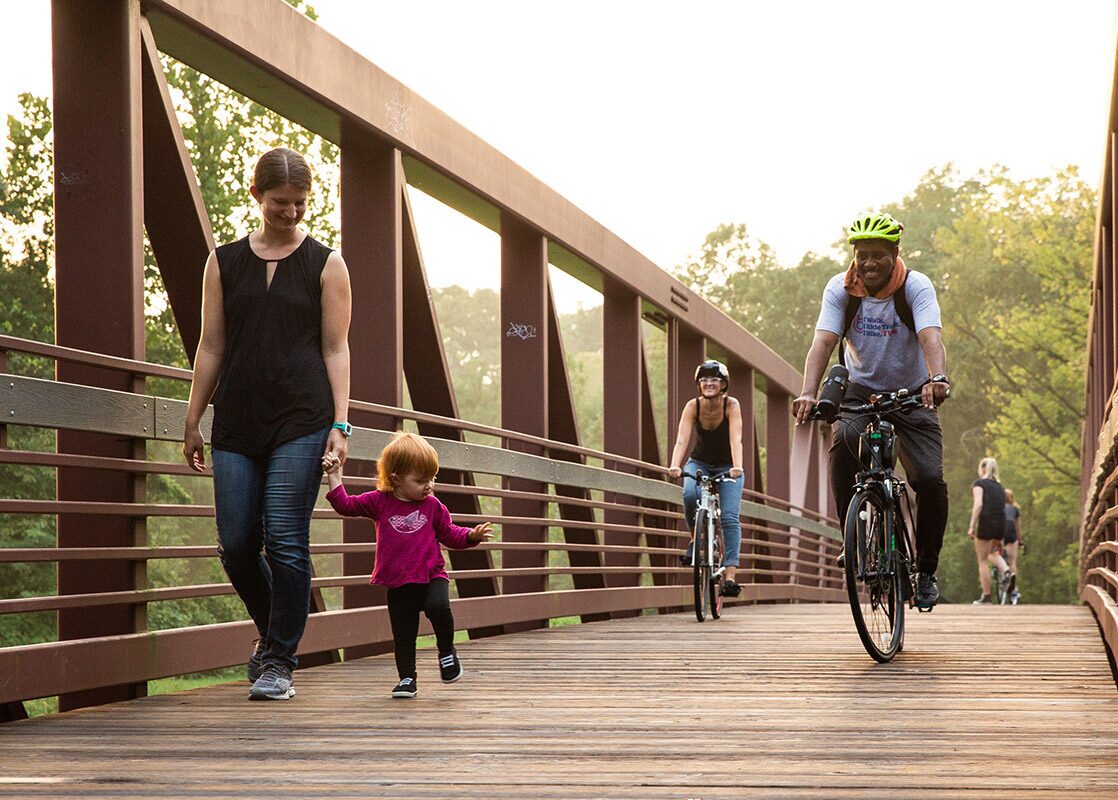
Donate
Everyone deserves access to safe ways to walk, bike, and be active outdoors.
